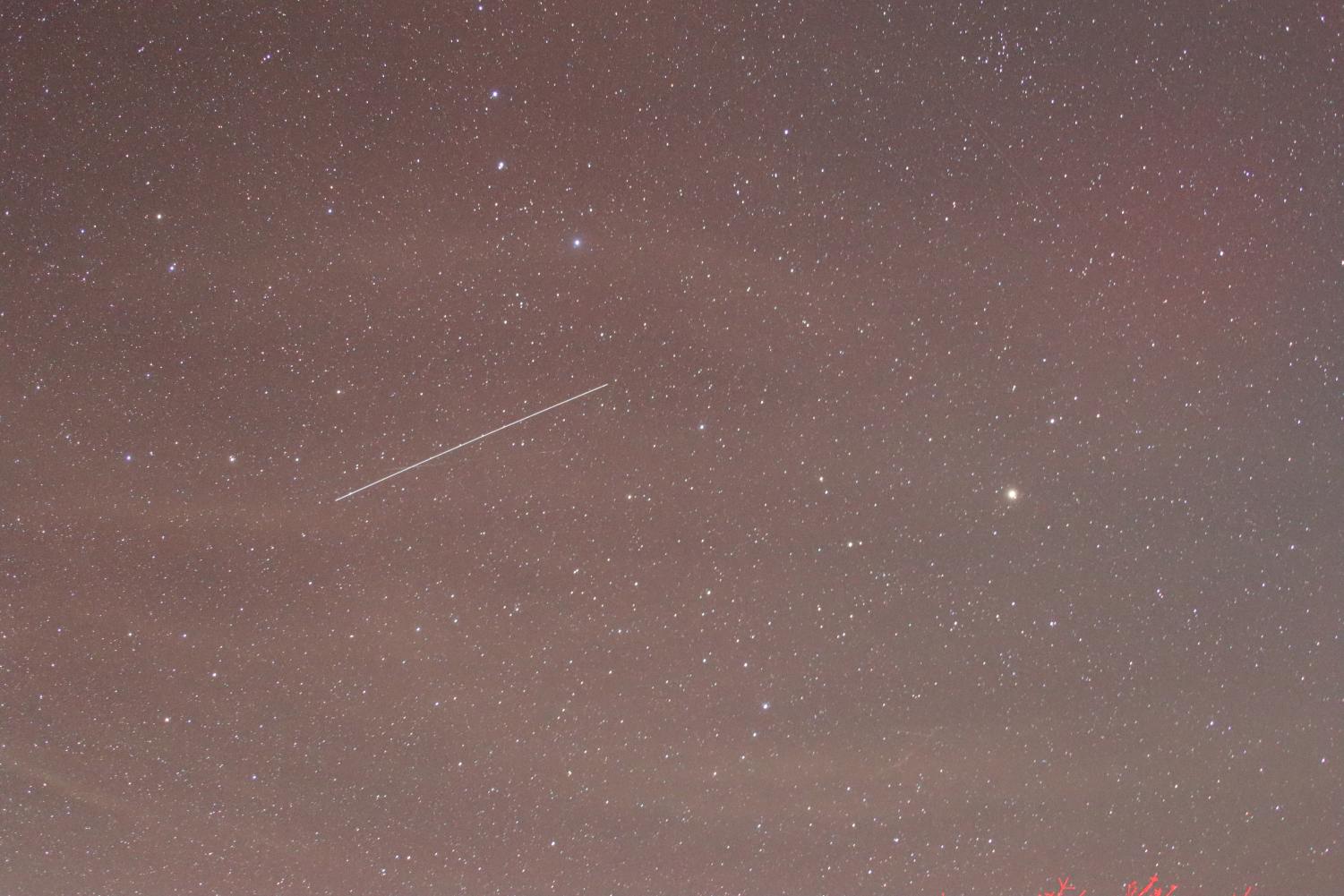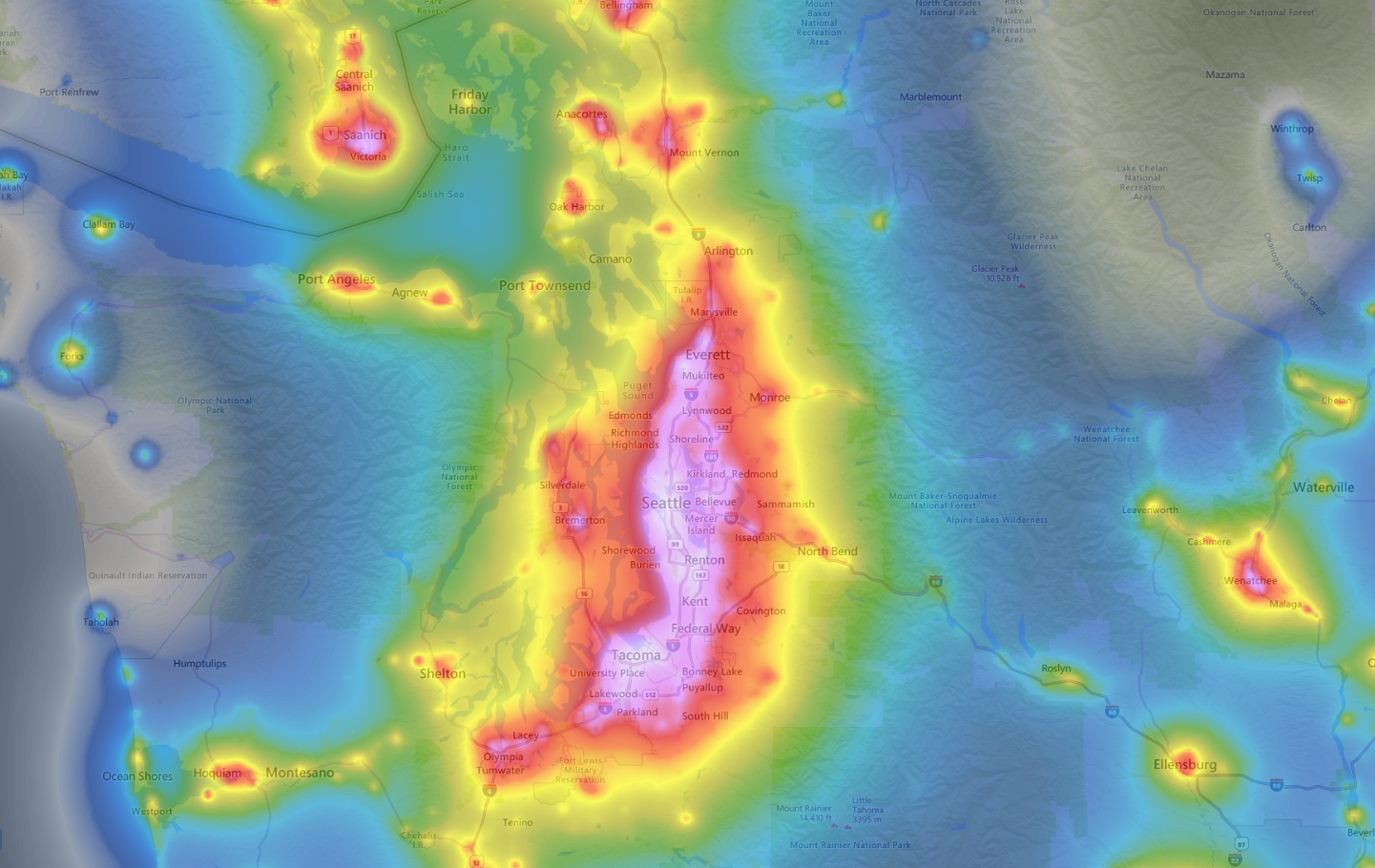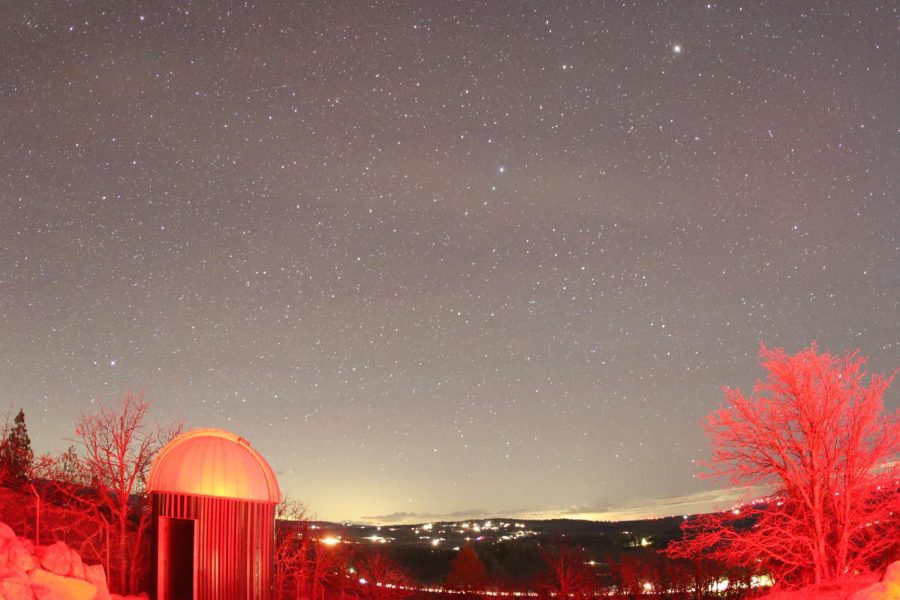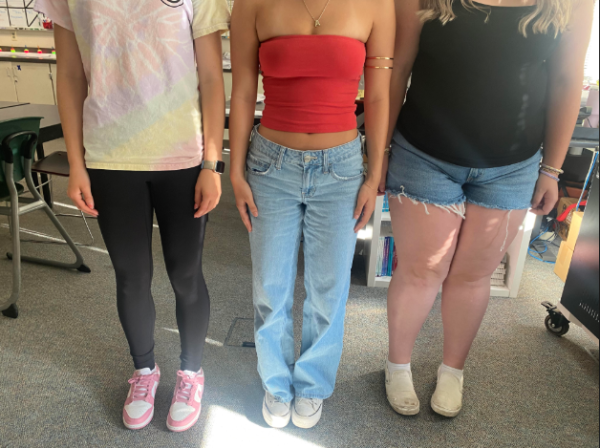Opinion: Light Pollution should be prevented at all costs
An image facing west from the Goldendale Observatory. On the left is the old observatory. Light from the building caused the red shift in the image.
For thousands of years, humanity has gazed towards the cosmos, marveling at the speckles of stars that blanket the night sky. A feeling comes upon people of complete disbelief at the unimaginable scale of the universe that we exist in. People feel inspired to explore the previously unexplored nooks in our solar system and even our galaxy. Or, some just stare in awe at the absolute beauty of it. This feeling of pure awe surrounding space has inspired me to begin pursuing a career that may allow me to let others see man-made satellites streak across their night sky.

This month I convinced my parents to let me drive four hours across the state to a remote observatory in Goldendale—a town south of Yakima. While I was unable to observe the observatory operating—due to an unannounced field trip—I was able to see the unpolluted sky above the observatory. I stared at the night sky with my dad, and we were able to see small satellites move gently across the horizon and appreciate the dedication of humans to be able to assemble such a technological marvel and then send it to space. We also saw a small light flash across the sky and then disappear as if it was never there; a meteor.
As I drove along the backcountry roads around the observatory, I was often blinded by oncoming cars that did not turn off their high beams. This blindness is similar to what causes me and other residents of Arlington to be unable to see vast amounts of stars at night—called light pollution. When wasted light from objects like billboards, streetlights, and buildings reflects off the night sky, they create a glow that obscures most dimmer stars.

In the past, I lived in a location between Seattle and Everett and was often shocked by the lack of stars that inhabited the night sky. As Arlington continues to develop into a larger city, I have started to fear that it will experience a dreadful fate of an empty night sky. But, this can also be prevented.
The simplest way to prevent light pollution is if cities simply switch to newer LED technologies instead of aging fluorescent lights, which saves both the sky and energy. Additionally, residents and city officials should be conscientious about lights at night. People can also turn off unnecessary lights like billboards, unshielded street lights, and indoor lights at night.
Not only does light pollution hinder people’s imagination, but it may also cause significant health effects. Light pollution has been documented to contribute to eye damage and could accelerate retinal degeneration and disease. Additionally, light pollution damages the natural sleep cycle of people and animals, causing significant health effects.
In nearly 20 states, laws have been enacted that help prevents significant light pollution at night. These laws are necessary because they not only allow for people to be inspired by the night sky but also help protect their residents’ health. Notably, Washington is absent from the states that are enacting these laws.
As society progresses technologically, we must also pause and focus on what we want for future generations. To prevent significant health effects and remain inspired by the sky’s beauty, we must be cautious about our overuse of light.









